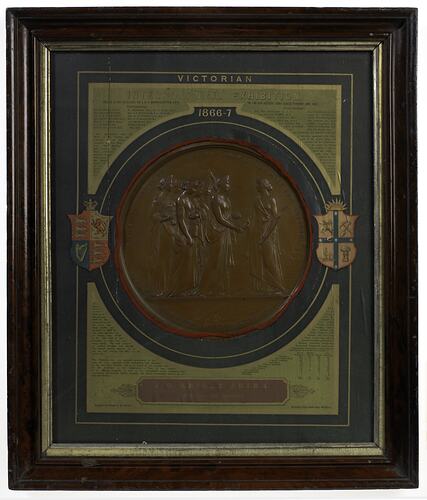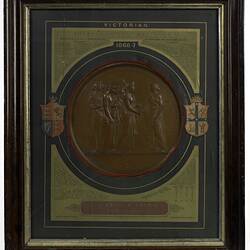John George Knight was born in London in 1822. The son of a stone and marble merchant, he took up engineering and joined his father's firm. In his spare time he studied architecture. At the age of 30 he sailed to Melbourne, and after a mere week on the goldfields joined the Public Works Department. As well as being a well-salaried government inspector he joined the private practice of Thomas Kemp. Knight won prizes for his designs for the Melbourne ship canal and docks. He also won a prize for the design of Government House, and although his design was not used supervision of the project was given to Knight. It was later passed on to his partner Peter Kerr. In 1835, the year of the Government House prize, he married Alice Bertrand.
Knight was founder of the Victorian Institute of Architects and its first president 1856-61. He helped to organise the Victorian Exhibition in 1861, and designed a 'miniature Crystal Palace' to house the exhibits. The following January he want to London with his growing family as secretary for Victorian at the London International Exhibition. He won medals for a guilded pyramid representing the total amount of gold mined in the Colony, and for his collection of building stones. Knight was also secretary and manager of the Intercolonial Exhibition, Melbourne, 1866 and a commissioner at the Adelaide Jubilee International at the University of Melbourne. He was founder and first manager of the Athenaeum Club in 1868. In the 1870s he was attracted to the North Exhibition in 1887-88.
In 1865 Knight was appointed lecturer in Civil Engineeringern Territory by reports of gold. In 1873 the South Australian government appointed him architect, supervisor of works, secretary and accountant to G.B. Scott. The appointment of a Victorian irritated South Australian politicians. He was retrenched as supervisor of works in 1875 and his salary cut, and he promptly resigned and returned to Melbourne. The following year he accepted the post of goldfields warden, returned to Port Darwin and built a hospital. He often tended sick miners himself. In 1880 he became clerk of the Local Court, Palmerston, and soon accepted several other government roles including deputy sheriff. In 1889 he was asked to act as government resident and judge. He was respected for his gentlemanly manner and common sense.
Knight died at Palmerston on 10 January 1892. He was survived by two married daughters and three sons. His wife, who was then living in London, inhereted most of his estate.
References:
Australian Dictionary of Biography website http://adbonline.anu.edu.au/adbonline.htm
More Information
-
Keywords
-
Localities
Melbourne, Victoria, Australia, Adelaide, South Australia, Australia, Darwin, Northern Territory, Australia
-
Authors
-
Article types

